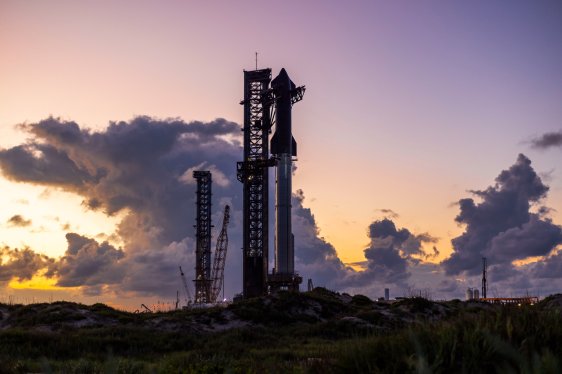
SpaceX to Deploy Model Starlink Satellites on Next Starship Launch in New Year
The anticipation is building for the next big milestone in SpaceX’s ambitious Starship test flight program. The space technology company has announced that its upcoming launch will mark a significant step forward, as it attempts to deploy payload for the first time. This development comes as part of the ongoing efforts to bring Starship online and make it an integral part of SpaceX’s plans to rapidly expand its Starlink satellite constellation.
Starlink Payload Simulators
The payload in question consists of 10 Starlink "simulators" that will be used to test the deployment process. These model spacecraft are designed to mimic the size and weight of the next-generation V3 satellites, which SpaceX plans to deploy using Starship. The simulators will travel on the same trajectory as the upper stage, also known as Starship, and splash down in the Indian Ocean.
The operational version of these satellites, called V3, is expected to be a major milestone for Starship, marking its first real payload deployment. By successfully deploying 60 V3 satellites per launch, SpaceX aims to add significant capacity to the Starlink network, with a total of 60 terabits per second. This represents a substantial increase in downlink and uplink capacity compared to the current V2 Mini spacecraft.
Benefits of Starship’s Payload Capacity
The incredible payload capacity of Starship is one of its key advantages over other launch vehicles. With Starship, SpaceX plans to deploy 60 V3 satellites per launch, which will add significantly to the Starlink network’s capacity. This capability will not only reduce costs per satellite launched but also enable rapid expansion of the constellation.
The statistics are impressive:
- Each V3 satellite offers more than 10 times the downlink capacity and 24 times the uplink capacity compared to the V2 Mini satellites.
- With Starship, SpaceX plans to deploy 60 V3 satellites per launch, adding a total of 60 terabits per second to the Starlink network.
Upgrades to the Rocket
In addition to the payload deployment test, SpaceX is also introducing several upgrades to the rocket. These improvements aim to boost reliability and performance by enhancing the propulsion system, avionics, and heat shield. The company has said that these upgrades will further enhance the capabilities of Starship.
Catching the Super Heavy Booster
During this test launch, SpaceX will attempt to "catch" the Super Heavy booster, a feat it accomplished for the first time during the fifth test in October. This demonstration showcases the company’s expertise in reusable rocket technology and its commitment to innovation.
The Road Ahead
As SpaceX continues to push the boundaries of space technology, its next milestone is expected to bring significant advancements in payload deployment. With the introduction of Starlink payload simulators and upgrades to the rocket, this test launch will pave the way for even more ambitious missions.
With each successful test, SpaceX draws closer to achieving its vision of rapid expansion of the Starlink satellite constellation. As the space industry continues to evolve, companies like SpaceX are at the forefront of innovation, driving progress and shaping the future of space exploration.













